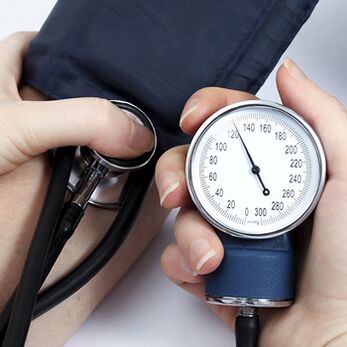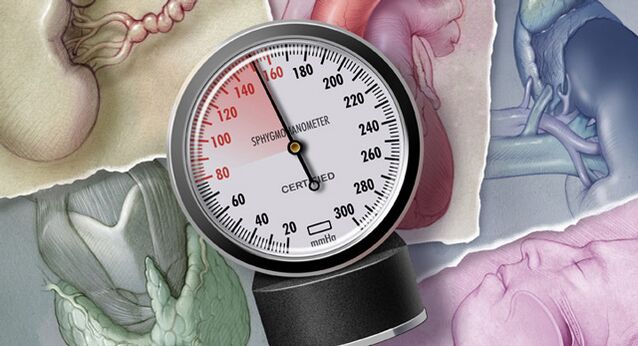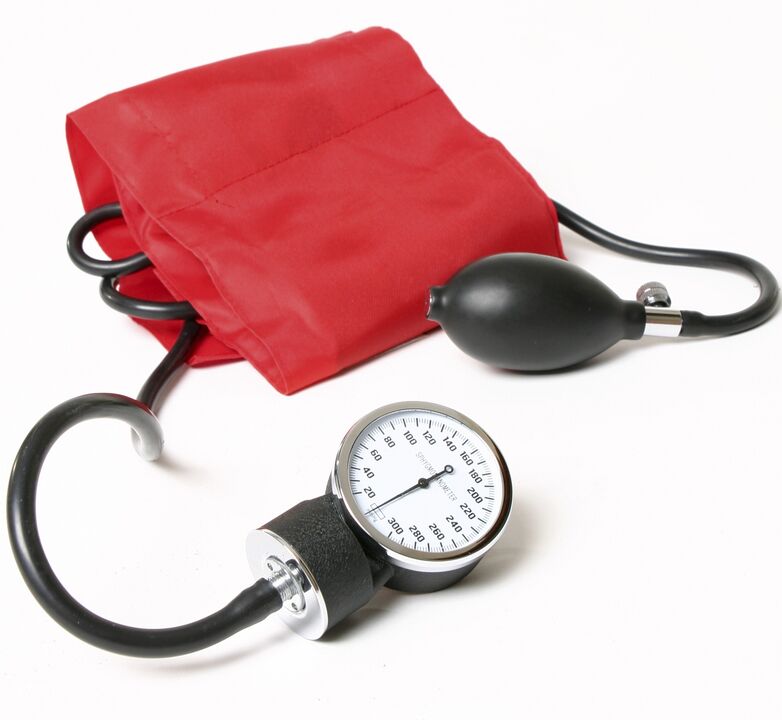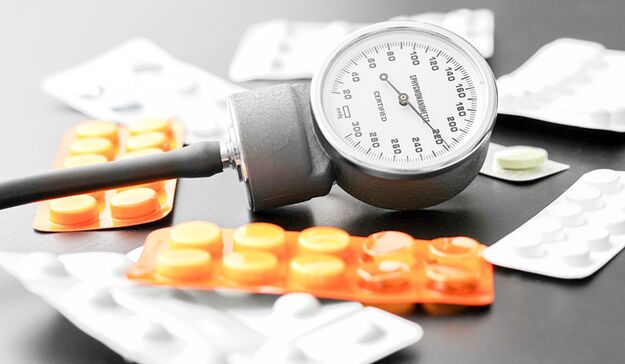
Hypertension (HTN) is one of the most common diseases of the cardiovascular system, which only according to approximate data affects one -third of the inhabitants of the world.At the age of 60-65, more than half of the population is diagnosed with hypertension.The disease is called a "silent killer" because its signs may be missing for a long time, while changes in the blood vessel wall already begin in the asymptomatic phase, greatly increasing the risk of vascular accidents.
In the Western literature, the disease is called arterial hypertension (AH).Others have adopted this formulation, although both "hypertension" and "hypertension" are still in common use.
The close attention to the problem of arterial hypertension is not so much caused by its clinical manifestations as by complications in the form of acute vascular disorders in the brain, heart and kidney.Preventing them is the main purpose of treatment aimed at maintaining normal blood pressure (BP).
An important point is to identify all potential risk factors,as well as clarifying their role in the progress of the disease.The relationship between the degree of hypertension and existing risk factors is presented in the diagnosis, which simplifies the evaluation of the patient's condition and prognosis.
For most patients, the numbers in diagnosis after "ah" means nothing, though it is clear that the higher the degree and the risk indicator, the worse the prognosis and the more serious pathology.In this article we will try to understand how and why one or another degree of hypertension is diagnosed and what implies the risk of complications.
Causes and risk factors of hypertension
The causes of arterial hypertension are numerous.GOVERNMENTTalking about primary, or essential hypertension, we andWe mean the case where there is no specific disease or previous pathology of the internal organs.In other words, such hypertension occurs on its own, including other organs in the pathological process.Primary hypertension accounts for more than 90% of cases of high chronic blood pressure.
The main cause of primary hypertension is considered to be stress and psycho-emotional overload, which contribute to the disruption of central mechanisms of brain pressure regulation, then suffer humoral mechanisms, and the target organs (kidneys, heart, retina) suffer.

Hypertension- A manifestation of another pathology, so its cause is always known.It accompanies kidney, heart, brain, endocrine disorders and is secondary to them.Once the underlying disease is cured, the hypertension also remains, so it makes no sense to determine the risk and rate in this case.Symptomatic hypertension accounts for no more than 10% of cases.
Risk factors for hypertension are also known to everyone.Hypertension schools are being created in clinics, whose specialists convey information to populations on adverse conditions leading to hypertension.Anydo therapist or cardiologist will tell the patient about risks already in the first case of high blood pressure.
Among the predisposing conditions for hypertension, the most important are:
- Smoking;
- Excess salt in food, excessive fluid consumption;
- Insufficient physical activity;
- Alcohol abuse;
- Excessive weight disorders and fat metabolism;
- Chronic psycho-emotional and physical overload.
If we can exclude the listed factors or at least try to reduce their impact on health, then features such as gender, age, inheritance cannot be changed, and therefore we will have to do with them, but not forgetting the increased risk.
Classification of arterial hypertension and determination of risk level
Classification of hypertension involves phase identification, disease rate and risk level of vascular accidents.
The stage of the diseaseIt depends on the clinical manifestations.Essential:
- The pre -clinical stage, when there are no signs of hypertension and the patient is unaware of increased blood pressure;
- Phase 1 of hypertension, when the pressure is raised, the crises are possible, but there are no signs of damage to the target organs;
- Phase 2 is associated with damage to the target organs - myocardial hypertrophy, changes in eye retina are visible, and the kidneys suffer;
- In Phase 3, strokes, myocardial ischemia, vision pathology, changes in large vessels (aortic aneurysm, atherosclerosis) are possible.
The degree of hypertension
Determination of the degree of hypertension is important in risk assessment and prognosis and is based on pressure figures.It should be said that normal blood pressure values also have different clinical meanings.So the indicator is up to 120/80 mm Hg.Art.numberoptimum,normalThe pressure will be between 120-129 mmHg.Art.systolic and 80-84 mm Hg.Art.diastolic.Pressure numbers 130-139/85-89 mmHg.Art.Still extend within normal limits, but are approaching the border with the pathology, which is why they are called "Very normal", And the patient can be told that he has high normal blood pressure. These indicators can be estimated as pre-at-statology because the pressure is only" a few millimeters "from the rise.

From the moment when blood pressure reached 140/90 mm Hg.Art.We can now talk about the presence of the disease.This indicator is used to determine the degree of hypertension itself:
- The first degree of hypertension (stage 1 or AH in diagnosis) means an increase in pressure in the 140-159/90-99 mmHg range.Art.
- Headache in Phase 2 is accompanied by numbers 160-179/100-109 mm Hg.Art.
- With phase 3 hypertension, the pressure is 180/100 mmHg.Art.and higher.
It happens that the systolic pressure figures increase, reaching 140 mm Hg.Art.and higher, while the diastolic value is within normal values.In this case they speaksystolic shapehypertension.In other cases, systolic and diastolic pressure indicators correspond to varying degrees of the disease, then the doctor makes a diagnosis in favor of a larger degree, and it does not matter if the conclusions are drawn based on systolic or diastolic pressure.
The most accurate diagnosis of the degree of hypertension is possible when the disease is first diagnosed, when the treatment has not yet been performed and the patient has not taken any antihypertensive drugs.During therapy, the numbers fall, and when interrupted, on the contrary, they can increase significantly, so it is no longer possible to adequately evaluate the rate.
The concept of risk in diagnosis
Hypertension is dangerous due to its complications.It is no secret that most patients die or become incapable not by the fact of high blood pressure itself, but by the acute disorders in which it leads.
Cerebral hemorrhages or ischemic necrosis, myocardial infarction, renal failure are the most dangerous conditions provoked by high blood pressure.In this regard, for each patient after a thorough examinationThe risk is determined, shown in the diagnosis by numbers 1, 2, 3, 4. Thus, the diagnosis is based on the degree of hypertension and the risk of vascular complications (for example, hypertension/Hypertension Phase 2, Risk 4).
Risk stratification criteriaFor patients with hypertension, external conditions, the presence of other diseases and metabolic disorders, the involvement of target organs and concomitant changes in organs and systems are used.
The main risk factors affecting prognosis include:
- The patient's age is after 55 years for men and 65 for women;
- Smoking;
- Disordisms of lipid metabolism (exceeds cholesterol rate, low density lipoproteins, lower lipid fractions with high density);
- The presence of cardiovascular pathology in the family among blood relatives under the age of 65 and 55 years for women and men, respectively;
- Excessive body weight, when abdominal circumference exceeds 102 cm in men and 88 cm in women.
Factors listed are considered the main ones, but many patients with hypertension suffer from diabetes, impaired glucose tolerance, lead a decreased life and have abnormalities in the blood coagulation system in the form of an increase in fibrinogen concentration.These factors considerextra, also by increasing the possibility of complications.
Damage to the target organs characterizes hypertension, starting from Phase 2, and serves as an important criterion that determines the risk, therefore, patient examination includes an ECG, heart ultrasound to determine the degree of hypertrophy of its muscles, blood and urine tests for kidney function (creatinine).
First of all, the heart suffers from high blood pressure, which pushes blood into a vessel with increased force.As the arteries and arterioles change, when their walls lose elasticity and lumens become spasmodic, heart loads grow progressively.A characteristic feature of the risk of stratification is consideredmyocardial, which may be suspected by ECG, can be determined by ultrasound examination.
Kidney involvement as a target organ is indicated by an increase in creatinine in the blood and urine and the appearance of albumin proteins in the urine.Against the backdrop of hypertension, large artery walls appear, atherosclerotic plaques appear, which can be detected with ultrasound (carotid artery, brachiocephalic).
The third stage of hypertension occurs with the associated pathology, that is, associated with hypertension.Among the diseases associated, the most important for prognosis are shocks, transient ischemic attacks, cardiac infarction and angina, nephropathy due to diabetes, kidney failure, retinopathy due to hypertension.
So the reader certainly understands how you can independently determine the degree of headache.This is not difficult, you just have to measure the pressure.Next, you can think about the presence of certain risk factors, consider age, gender, laboratories, ECG data, ultrasound, etc.In general, everything listed above.
For example, a patient's blood pressure corresponds to phase 1 hypertension, but at the same time he suffered a stroke, which means that the risk will be maximum - 4, even if stroke is the only problem other than hypertension.If the pressure corresponds to the first or second degree, and the only risk factors that can be marked are smoking and age in the background of very good health, then the risk will be moderate - 1 tablespoon.(2 tbsp.), Risk 2.
To make it clear what the risk indicator means in a diagnosis, you can summarize everything at a small table.By defining your rank and "counting" the factors listed above, you can determine the risk of vascular accidents and hypertension complications for a particular patient.Number 1 means low risk, 2 - moderate, 3 - high, 4 - very high risk of complications.
| Risk factors | BP 130-139/85-89, risk | GB (ah) 1, risk | GB 2, risk | GB 3, risk |
|---|---|---|---|---|
| ANY | 1 | 2 | 3 | |
| 1-2 | 1 | 2 | 2 | 4 |
| More than three factors/damage/target diabetes | 3 | 3 | 3 | 4 |
| pathology associated | 4 | 4 | 4 | 4 |
Low risk implies that the probability of vascular accidents is not more than 15%, moderate - up to 20%, high risk indicates the development of complications in a third of patients from this group, with a very high risk more than 30%of patients are susceptible to complications.
Manifestations and complications of headache
Manifestations of hypertension are determined by the stage of the disease.In the precinct period, the patient feels good, and only the readings of the tonometer indicate a developing disease.

While changes in blood vessels and heart progression, symptoms appear in the form of headache, weakness, decrease in performance, periodic dizziness, visual symptoms in the form of weakened visual acuity, stirring "points" before the eyes.All of these signs are not expressed during a stable course of pathology, but at the time of developing a hypertensive crisis, the clinic becomes brighter:
- Severe headache;
- Noise, ringing on the head or ear;
- Darkening in the eye;
- Pain in the heart area;
- Dyspne;
- Facial hyperemia;
- Excitement and feeling of fear.
Hypertensional crises are provoked by traumatic situations, excessive work, stress, coffee consumption and alcoholic beverages, so patients with a diagnosed diagnosis should already avoid such impacts.Against the backdrop of a hypertensive crisis, the possibility of complications increases significantly, including those that threaten life:
- Hemorrhage or cerebral infarction;
- Acute hypertensional encephalopathy, perhaps with cerebral edema;
- Pulmonary edema;
- Acute kidney failure;
- Heart attack.
How to measure blood pressure correctly?
If there is reason to suspect in high blood pressure, the first thing a specialist will do is measure it.Until recently, it was believed that blood pressure numbers may normally vary in different hands, but, as practice has shown, a change of 10 mm Hg.Art.It can be due to the pathology of the peripheral vessels, so different pressures on the right and left hands should be handled carefully.

To get the most reliable figures, it is recommended to measure the pressure three times in each arm with short intervals, by recording any results obtained.In most patients, the smallest values obtained are more accurate, but in some cases the pressure increases from measurement to measurement, which does not always speak in favor of hypertension.
A large selection and availability of blood pressure measuring equipment make it possible to monitor it in a wide range of people at home.Typically, hypertensive patients have a tonometer at home, at hand, so that if their health worsens, they can immediately measure blood pressure.However, it is worth noting that fluctuations are also possible in absolutely healthy individuals without hypertension, so a single excess rate should not be assessed as a disease, and make a diagnosis of hypertension, the pressure should be measured at different times, under different conditions and repeatedly.
When diagnosing hypertension, blood pressure figures, electrocardiography data and cardiac auscultation results are considered essential.When you hear, it is possible to detect noise, grown tones and arrhythmias.ECG, starting from the second phase, will show signs of stress on the left side of the heart.
Hypertension Treatment
To correct high blood pressure, treatment regimes have been developed that include medicines of different groups and different mechanisms of action.TheirCombination and doses are selected by the doctor individuallyConsidering the stage, simultaneous pathology and response of hypertension to a specific drug.After creating the diagnosis of hypertension and before the treatment of medication begins, the doctor will suggest non-drug measures that significantly increase the effectiveness of pharmacological drugs, and sometimes allow you to reduce the dose of drugs or abandon at least some of them.
First of all, it is recommended to normalize the regime, eliminate stress and provide physical activity.The diet is aimed at reducing the intake of salt and liquids, eliminating alcohol, coffee and drinks and substances that stimulate the nervous system.If you are overweight, you should limit calories and avoid fatty, flour, fried and spicy foods.
Non-drug measures in the initial stage of hypertension can have such a good effect that the need to prescribe medication will no longer be needed.If these measures do not work, the doctor prescribes appropriate medication.
The purpose of treatment of hypertension is not only to reduce blood pressure, but also to eliminate, if possible, its cause.

Antihypertensive drugs from the following groups are traditionally used to treat hypertension:
- Diuretics;
- Angiotensin II receptor antagonists;
- ACE inhibitors;
- Adrenergic blockers;
- Calcium channel blockers.
Yeardo year the list of medicines that reduce blood pressure increases and at the same time becomes more effective and secure, with fewer side reactions.When starting therapy, a drug is prescribed at a minimal dose;If it is ineffective, it can increase.If the disease progresses and the pressure does not remain at acceptable values, then another drug from another group is added to the first drug.Clinical observations show that the effect is better with combinating therapy than with the prescription of a medicine in the maximum amount.
Reducing the risk of vascular complications is important in choosing a treatment regimen.Thus, it has been observed that some combinations have a more pronounced "protective" effect on organs, while others allow for better pressure control.In such cases, experts prefer a combination of medicines that reduce the chance of complications, even if there are some daily fluctuations in blood pressure.
In some cases, it is necessary to consider simultaneous pathology, which makes adjustments to headache treatment regimes.For example, men with prostate adenoma are prescribed alpha-blocking, which are not recommended for continuous use to reduce blood pressure in other patients.
The most used ACE inhibitors, calcium channel blockers,which are prescribed to both young and elderly patients, with or without concomitant diseases, diuretics, sartans.The drugs in these groups are suitable for initial treatment, which can then be supplemented with a third drug of a different composition.
ACE inhibitors reduce blood pressure and at the same time have a protective effect on the kidneys and myocardium.They are preferable in young patients, women who receive hormonal contraceptives, shown for diabetes and older patients.
DiureticsNo less popular.To reduce side reactions, they combine with ACE inhibitors, sometimes "on a tablet".
BetaThey are not a group of advantages for hypertension, but they are effective for concomitant cardiac pathology - heart failure, tachycardia, coronary disease.
Calcium channel blockersOften described in combination with ACE inhibitors, they are especially good for bronchial asthma in combination with hypertension, as they do not cause bronchospasm.
Angiotensin receptor antagonists- The most prescribed group of hypertension medication.They effectively reduce blood pressure and do not cause coughing like many ACE inhibitors.But in America they are especially common due to a 40% reduction in the risk of Alzheimer's disease.
When treating hypertension, it is important not only to choose an effective regimen, but also take medication for a long time, even for life.Many patients believe that when pressure reaches normal levels, treatment may stop, but they grab the pills by the time of the crisis.It is well known that non -systematic use of antihypertensive drugs is even more harmful to health than complete lack of treatment, therefore, patient information about the duration of treatment is one of the important tasks of the physician.























